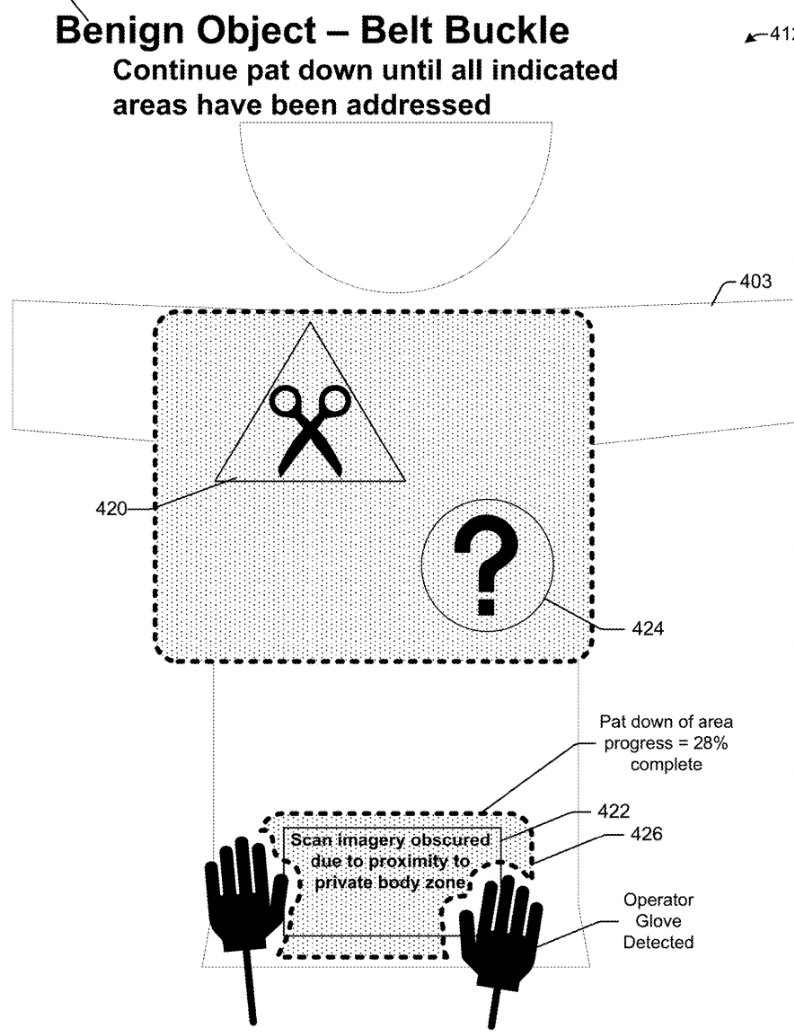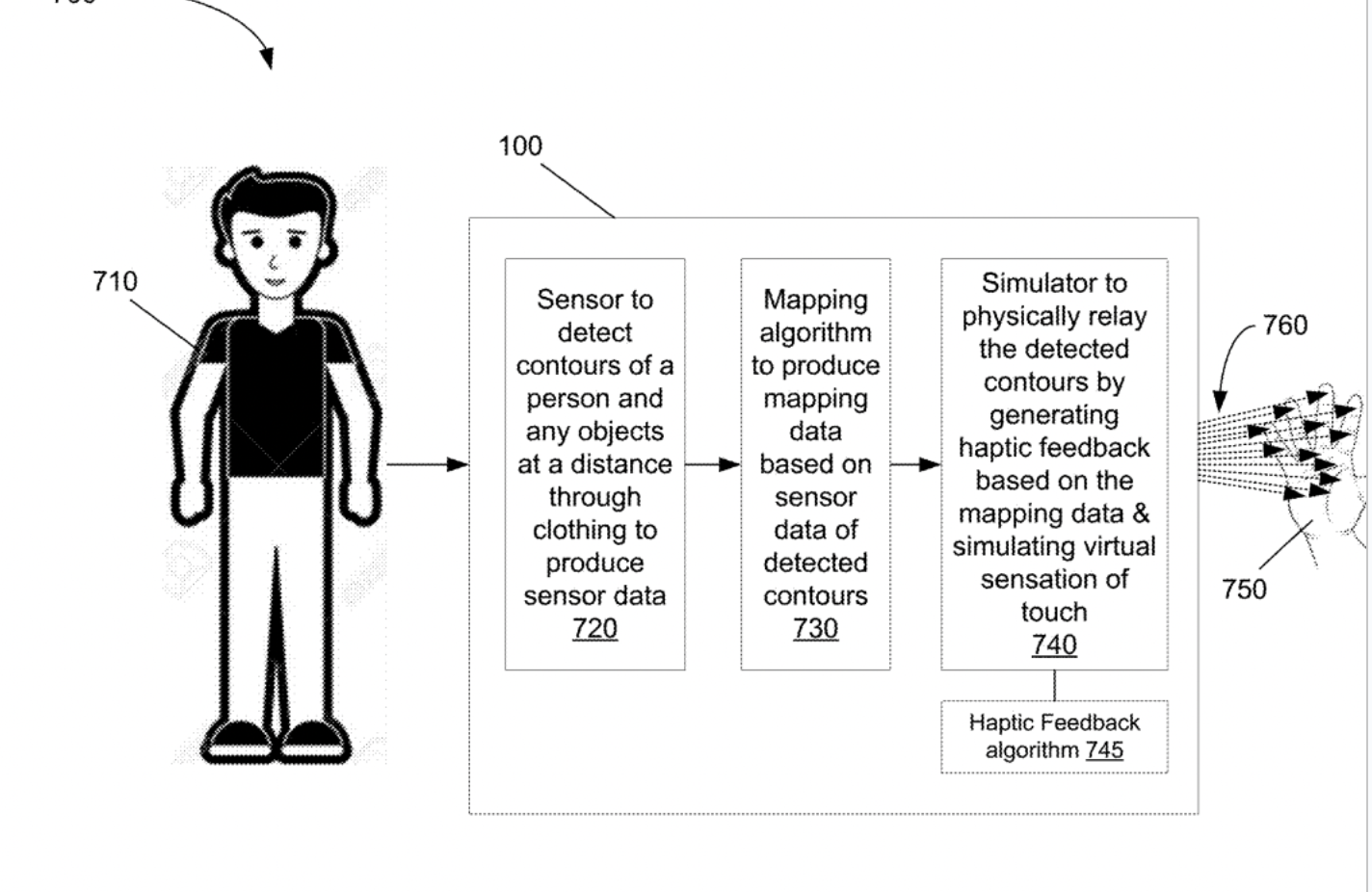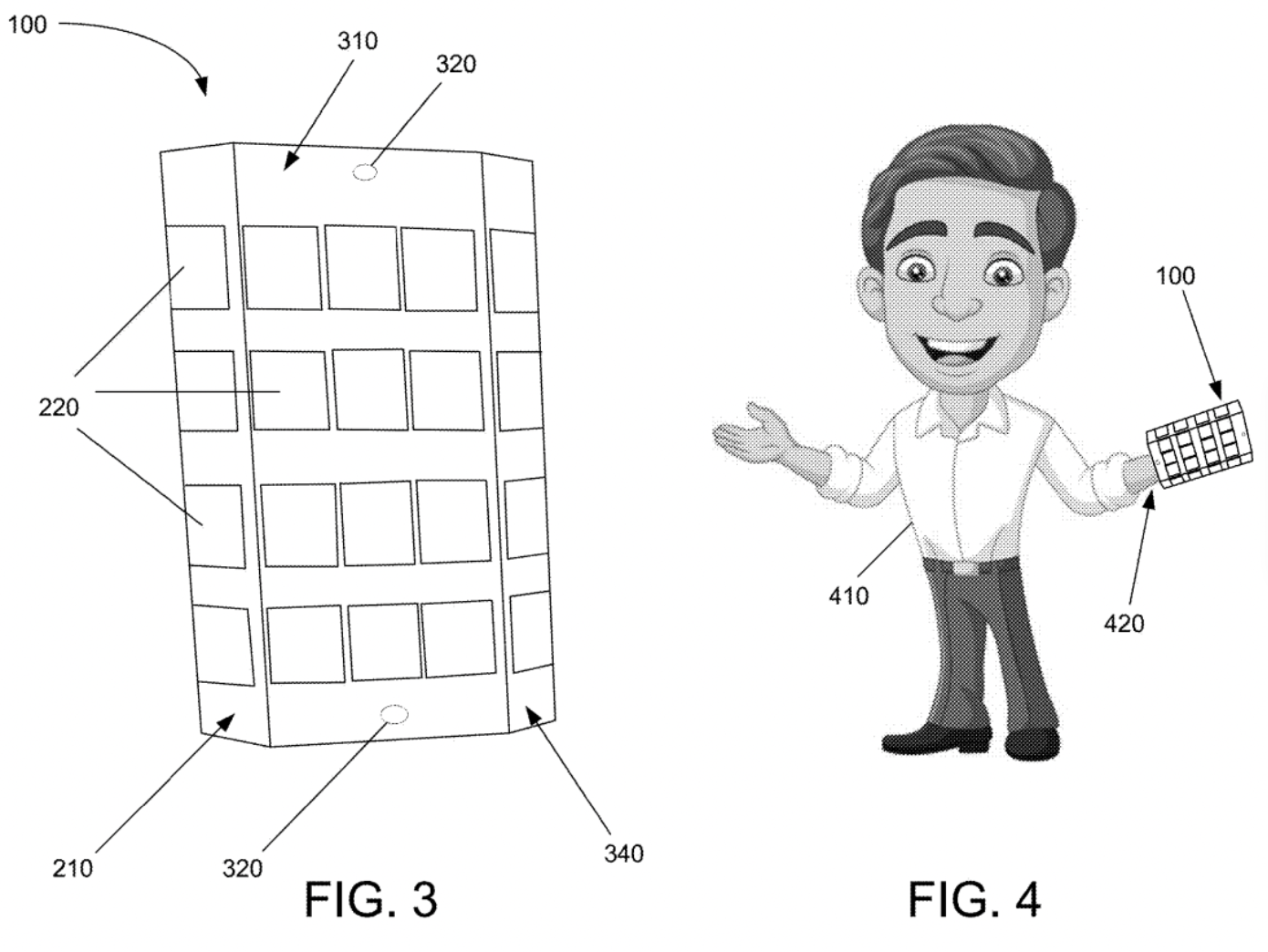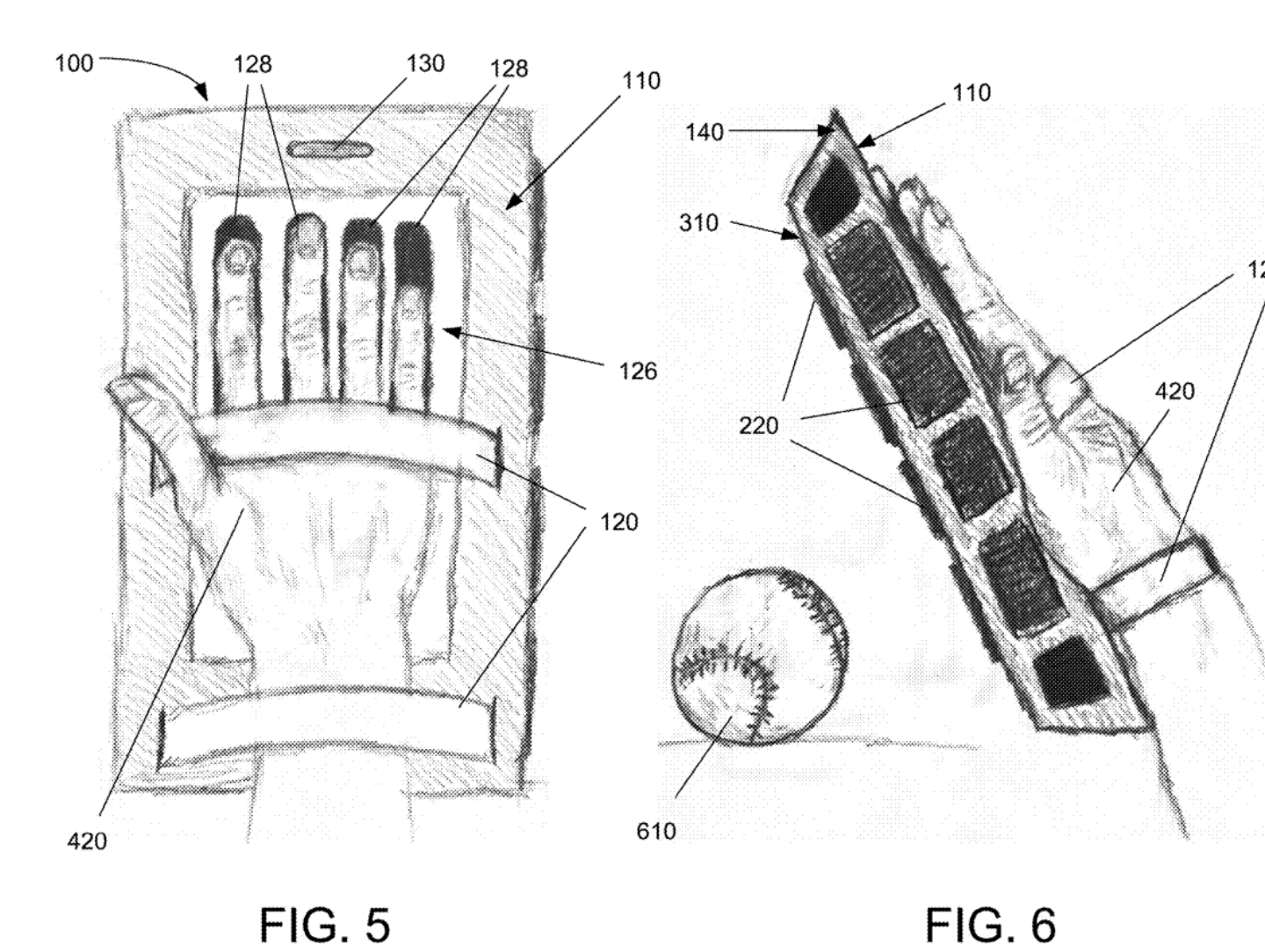
The Department of Homeland Security (DHS) and Transportation Security Administration (TSA) are researching an incredibly wild virtual reality technology that would allow TSA agents to use VR goggles and haptic feedback gloves to allow them to pat down and feel airline passengers at security checkpoints without actually touching them. The agency calls this a “touchless sensor that allows a user to feel an object without touching it.”
Information sheets released by DHS and patent applications describe a series of sensors that would map a person or object’s “contours” in real time in order to digitally replicate it within the agent’s virtual reality system. This system would include a “haptic feedback pad” which would be worn on an agent’s hand. This would then allow the agent to inspect a person’s body without physically touching them in order to ‘feel’ weapons or other dangerous objects. A DHS information sheet released last week describes it like this:
“The proposed device is a wearable accessory that features touchless sensors, cameras, and a haptic feedback pad. The touchless sensor system could be enabled through millimeter wave scanning, light detection and ranging (LiDAR), or backscatter X-ray technology. A user fits the device over their hand. When the touchless sensors in the device are within range of the targeted object, the sensors in the pad detect the target object’s contours to produce sensor data. The contour detection data runs through a mapping algorithm to produce a contour map. The contour map is then relayed to the back surface that contacts the user’s hand through haptic feedback to physically simulate a sensation of the virtually detected contours in real time.”
The system “would allow the user to ‘feel’ the contour of the person or object without actually touching the person or object,” a patent for the device reads. “Generating the mapping information and physically relaying it to the user can be performed in real time.” The information sheet says it could be used for security screenings but also proposes it for “medical examinations.”

The seeming reason for researching this tool is that a TSA agent would get the experience and sensation of touching a person without actually touching the person, which the DHS researchers seem to believe is less invasive. The DHS information sheet notes that a “key benefit” of this system is it “preserves privacy during body scanning and pat-down screening” and “provides realistic virtual reality immersion,” and notes that it is “conceptual.” But DHS has been working on this for years, according to patent filings by DHS researchers that date back to 2022.
Whether it is actually less invasive to have a TSA agent in VR goggles and haptics gloves feel you up either while standing near you or while sitting in another room is something that is going to vary from person to person. TSA patdowns are notoriously invasive, as many have pointed out through the years. One privacy expert who showed me the documents but was not authorized to speak to the press about this by their employer said “I guess the idea is that the person being searched doesn’t feel a thing, but the TSA officer can get all up in there?,” they said. “The officer can feel it … and perhaps that’s even more invasive (or inappropriate)? All while also collecting a 3D rendering of your body.” (The documents say the system limits the display of sensitive parts of a person’s body, which I explain more below).

There are some pretty wacky graphics in the patent filings, some of which show how it would be used to sort-of-virtually pat down someone’s chest and groin (or “belt-buckle”/“private body zone,” according to the patent). One of the patents notes that “embodiments improve the passenger’s experience, because they reduce or eliminate physical contacts with the passenger.” It also claims that only the goggles user will be able to see the image being produced and that only limited parts of a person’s body will be shown “in sensitive areas of the body, instead of the whole body image, to further maintain the passenger’s privacy.” It says that the system as designed “creates a unique biometric token that corresponds to the passenger.”
A separate patent for the haptic feedback system part of this shows diagrams of what the haptic glove system might look like and notes all sorts of potential sensors that could be used, from cameras and LiDAR to one that “involves turning ultrasound into virtual touch.” It adds that the haptic feedback sensor can “detect the contour of a target (a person and/or an object) at a distance, optionally penetrating through clothing, to produce sensor data.”


DHS has been obsessed with augmented reality, virtual reality, and AI for quite some time. Researchers at San Diego State University, for example, proposed an AR system that would help DHS “see” terrorists at the border using HoloLens headsets in some vague, nonspecific way. Customs and Border Patrol has proposed “testing an augmented reality headset with glassware that allows the wearer to view and examine a projected 3D image of an object” to try to identify counterfeit products.
DHS acknowledged a request for comment but did not provide one in time for publication.


